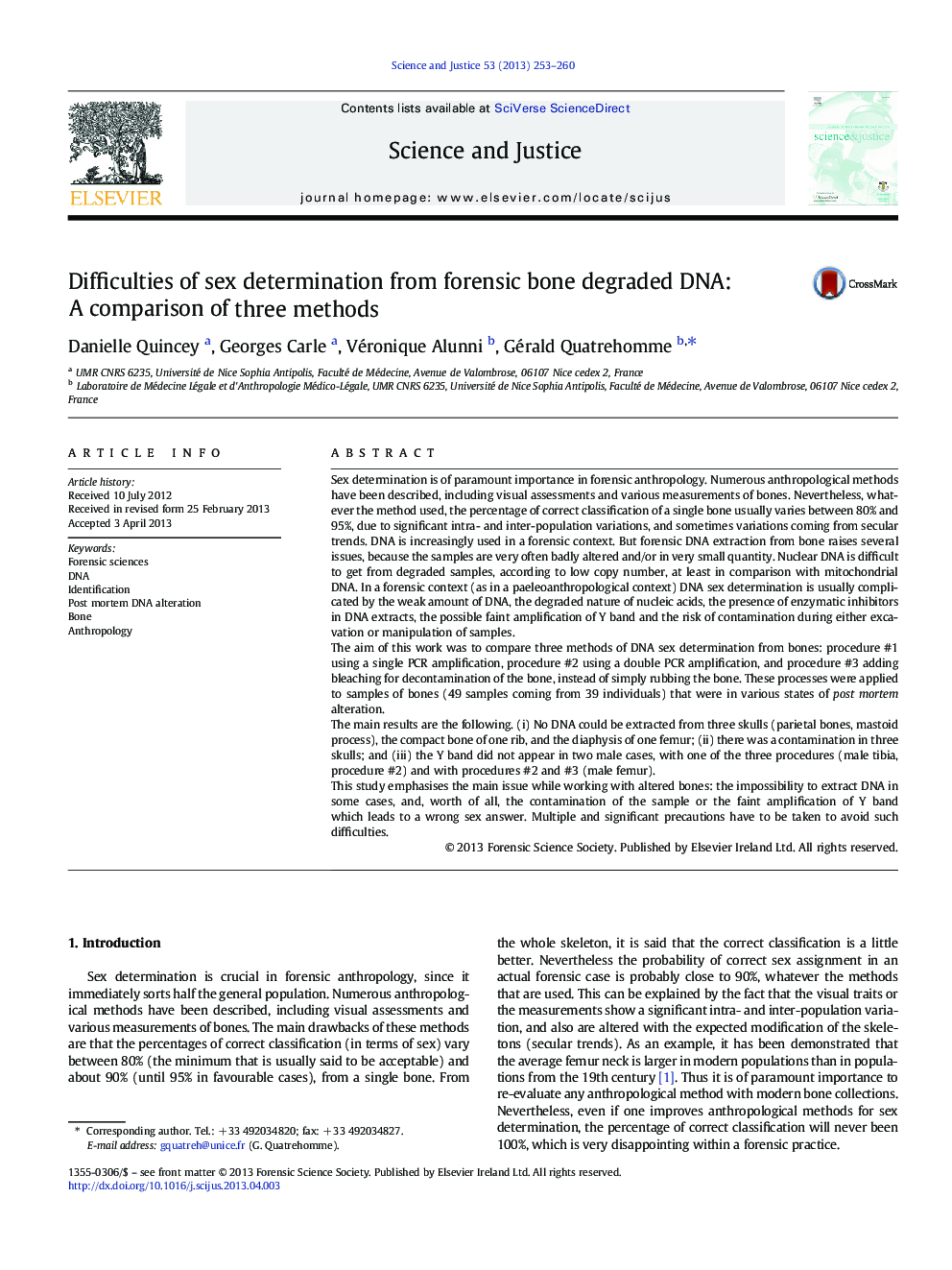| کد مقاله | کد نشریه | سال انتشار | مقاله انگلیسی | نسخه تمام متن |
|---|---|---|---|---|
| 107132 | 161749 | 2013 | 8 صفحه PDF | دانلود رایگان |

Sex determination is of paramount importance in forensic anthropology. Numerous anthropological methods have been described, including visual assessments and various measurements of bones. Nevertheless, whatever the method used, the percentage of correct classification of a single bone usually varies between 80% and 95%, due to significant intra- and inter-population variations, and sometimes variations coming from secular trends. DNA is increasingly used in a forensic context. But forensic DNA extraction from bone raises several issues, because the samples are very often badly altered and/or in very small quantity. Nuclear DNA is difficult to get from degraded samples, according to low copy number, at least in comparison with mitochondrial DNA. In a forensic context (as in a paeleoanthropological context) DNA sex determination is usually complicated by the weak amount of DNA, the degraded nature of nucleic acids, the presence of enzymatic inhibitors in DNA extracts, the possible faint amplification of Y band and the risk of contamination during either excavation or manipulation of samples.The aim of this work was to compare three methods of DNA sex determination from bones: procedure #1 using a single PCR amplification, procedure #2 using a double PCR amplification, and procedure #3 adding bleaching for decontamination of the bone, instead of simply rubbing the bone. These processes were applied to samples of bones (49 samples coming from 39 individuals) that were in various states of post mortem alteration.The main results are the following. (i) No DNA could be extracted from three skulls (parietal bones, mastoid process), the compact bone of one rib, and the diaphysis of one femur; (ii) there was a contamination in three skulls; and (iii) the Y band did not appear in two male cases, with one of the three procedures (male tibia, procedure #2) and with procedures #2 and #3 (male femur).This study emphasises the main issue while working with altered bones: the impossibility to extract DNA in some cases, and, worth of all, the contamination of the sample or the faint amplification of Y band which leads to a wrong sex answer. Multiple and significant precautions have to be taken to avoid such difficulties.
Journal: Science & Justice - Volume 53, Issue 3, September 2013, Pages 253–260